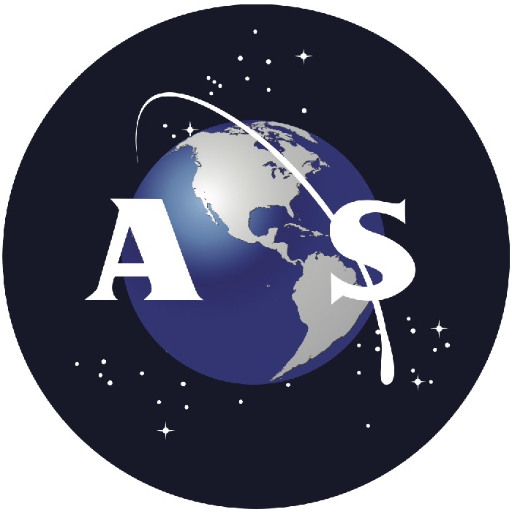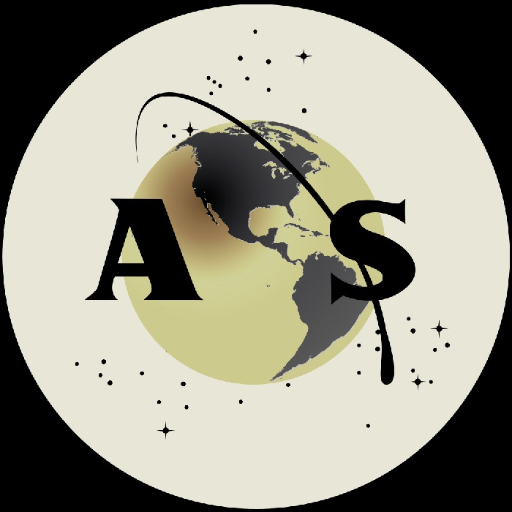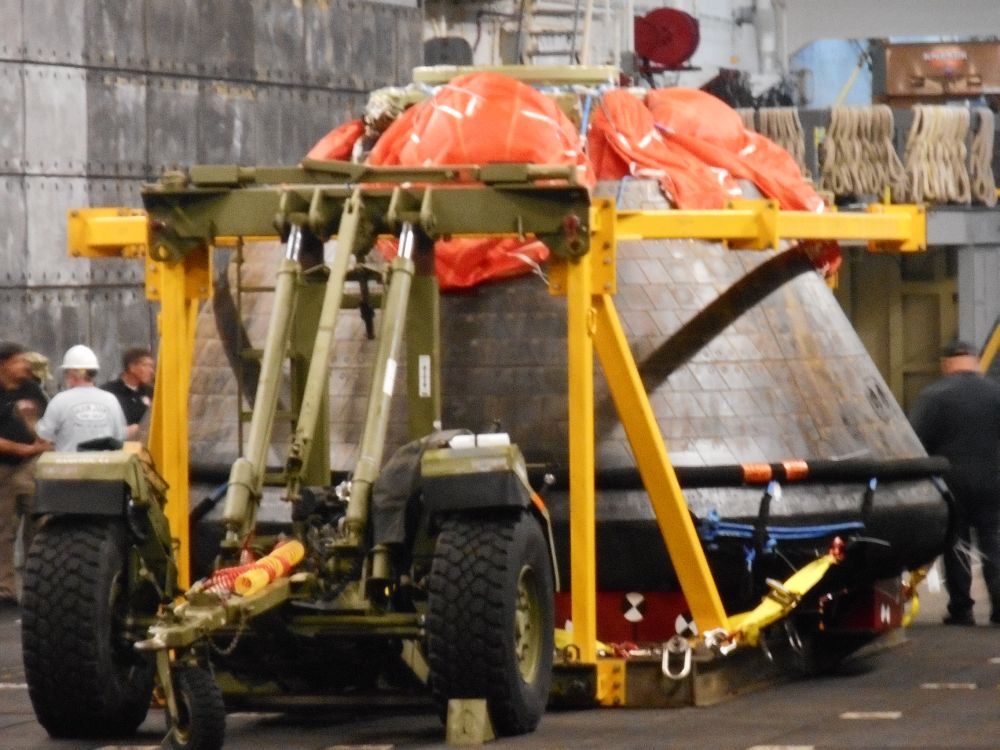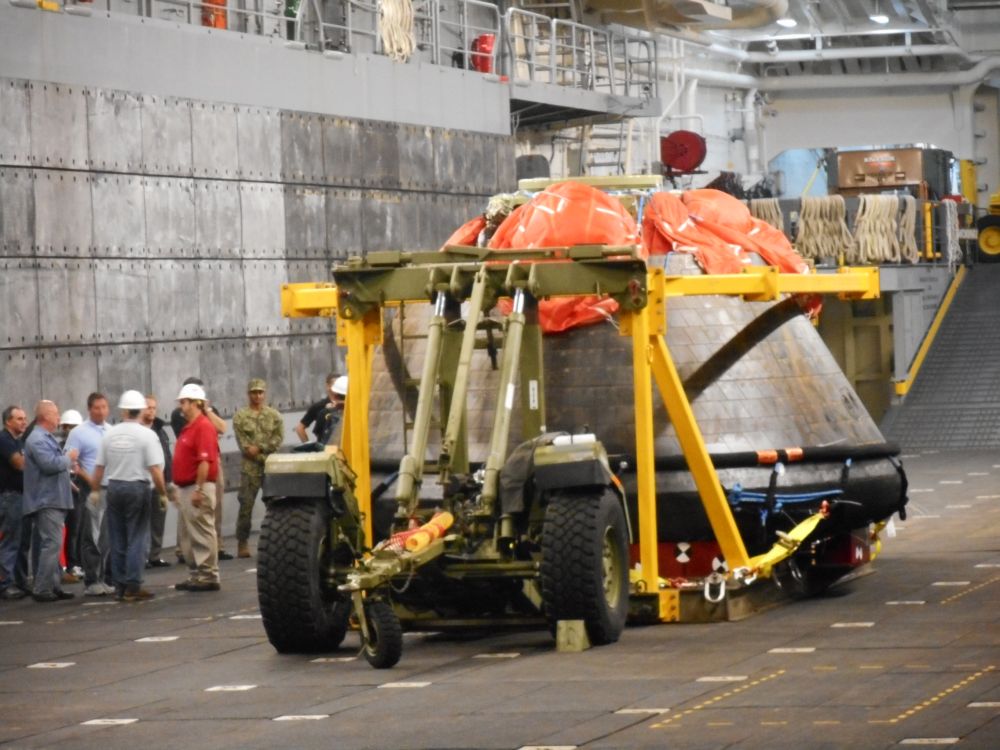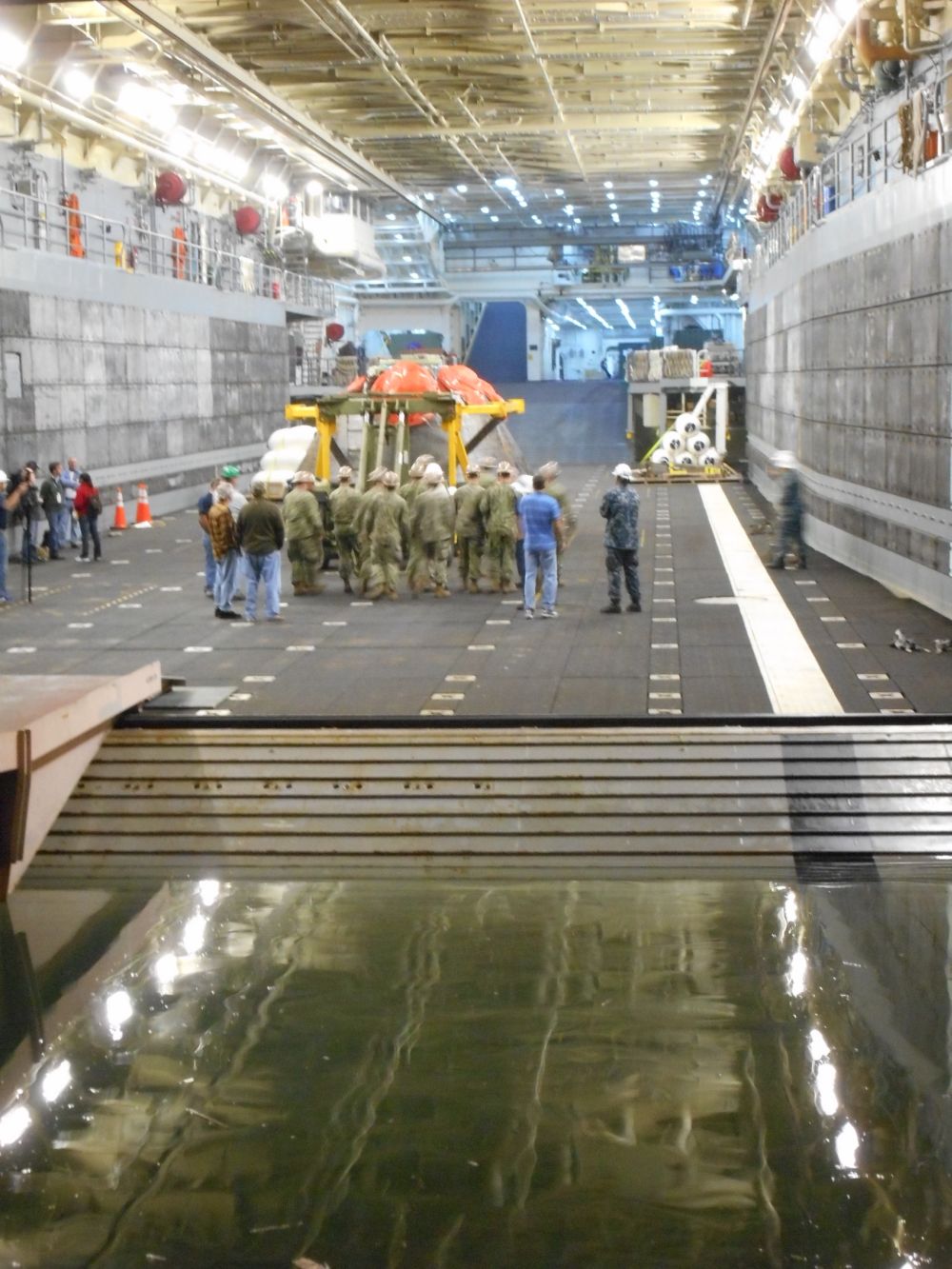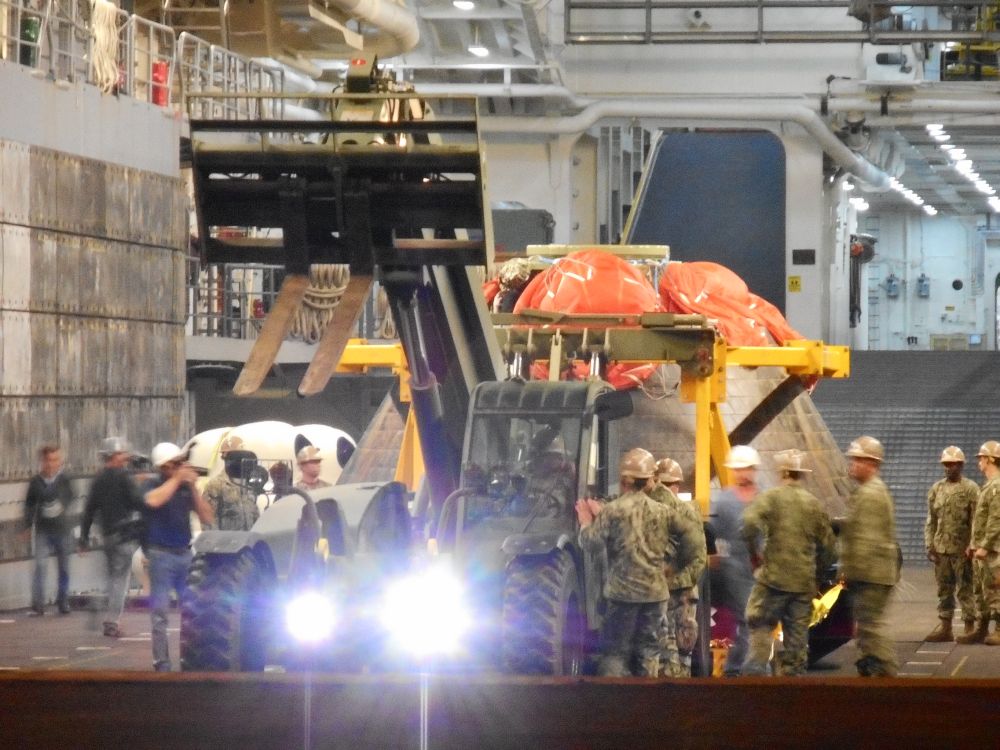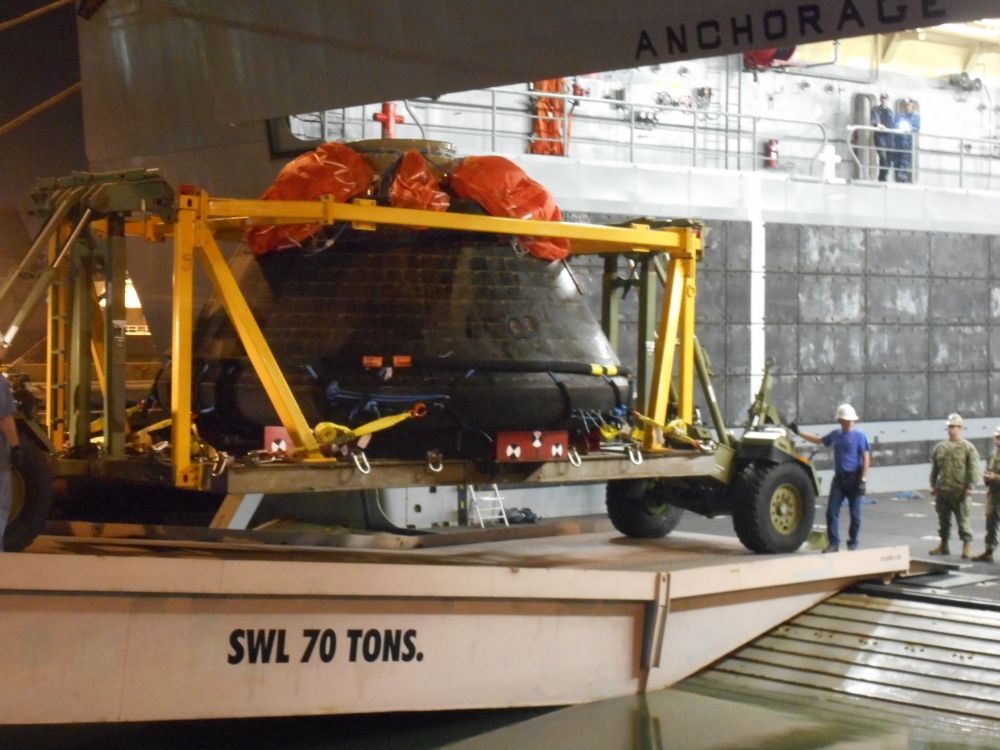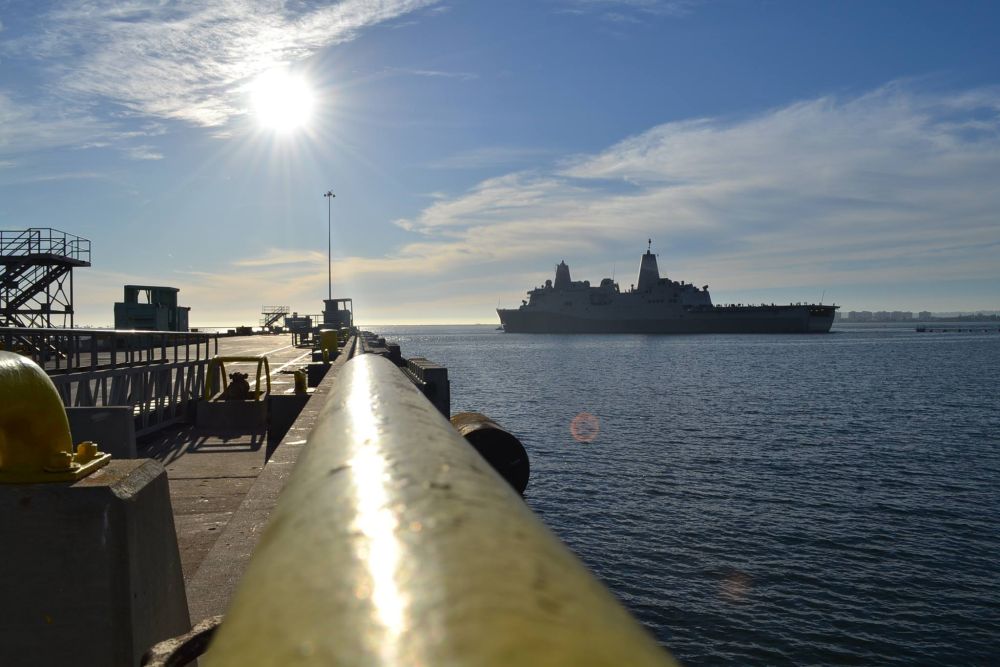
Just three days after its historic mission, NASA’s Orion capsule—which made a successful test flight after being launched aboard a United Launch Alliance (ULA) Delta IV Heavy launch vehicle on the morning of Friday, Dec. 5—was returned to shore by a U.S. Navy vessel. On the evening of Monday, Dec. 8, the USS Anchorage (LPD-23, a naval amphibious transport dock) pulled into port at Naval Base San Diego, where personnel off-loaded its precious cargo off the ship’s ramp onto a vehicle, readying the spacecraft for its journey back to Kennedy Space Center.
ABOVE: U.S. Navy recovery efforts shortly following Orion’s Dec. 5 splashdown. CREDIT: U.S. Military Videos and Photos on YouTube
Orion splashed down 4.5 hours after beginning its mission from Cape Canaveral Air Force Station’s Space Launch Complex 37 at 7:05 a.m. Friday. The spacecraft, which made two orbits (the latter orbit providing live, spectacular high-apogee views of our home planet), splashed down approximately 600 miles southwest of San Diego after hurtling through the Earth’s atmosphere at 20,000 mph.
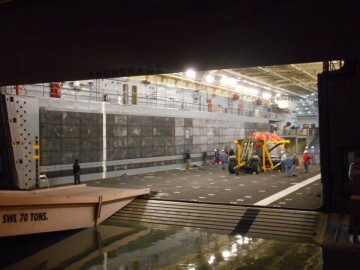
According to NASA, the agency and the Navy recovered the capsule in conjunction with Orion’s prime contractor, Lockheed Martin. The USNS Salvor (a rescue and salvage ship) along with NASA’s drone Ikhana (and several U.S. Navy planes and helicopters) also aided in recovery. The spacecraft’s live cameras caught some reentry footage, the descent, and parachute deployment, broadcasting the mission’s final moments prior to recovery for awed viewers worldwide.
Orion’s next journey will take it back to NASA’s Kennedy Space Center, where engineers will analyze the spacecraft and process further data concerning the test flight. The capsule is expected to return to Florida shortly before Christmas. “America’s Spacecraft” is destined for deep space destinations such as asteroids and Mars. In 2018, NASA will launch Exploration Mission 1 (EM-1) on a trans-lunar trajectory via the Space Launch System (SLS) launch vehicle, touted as the “successor” to the Moon-bound Saturn V rocket of the 1960s and 1970s. This mission is meant to be a test of the integrated Orion/SLS systems; in addition, the European Space Agency (ESA) will fly its service module. Human-helmed missions are scheduled to begin in 2021.
For an in-depth report about Orion’s mission, read AmericaSpace’s post-launch article by Ben Evans. In addition, check out our gallery of launch highlights by AmericaSpace’s photography team.
PHOTO CREDITS: The photo showing the USS Anchorage pulling into port is from NASA. The other photos were provided by Francis French, education director at the San Diego Air & Space Museum. Many thanks to Francis French for the use of these photos.
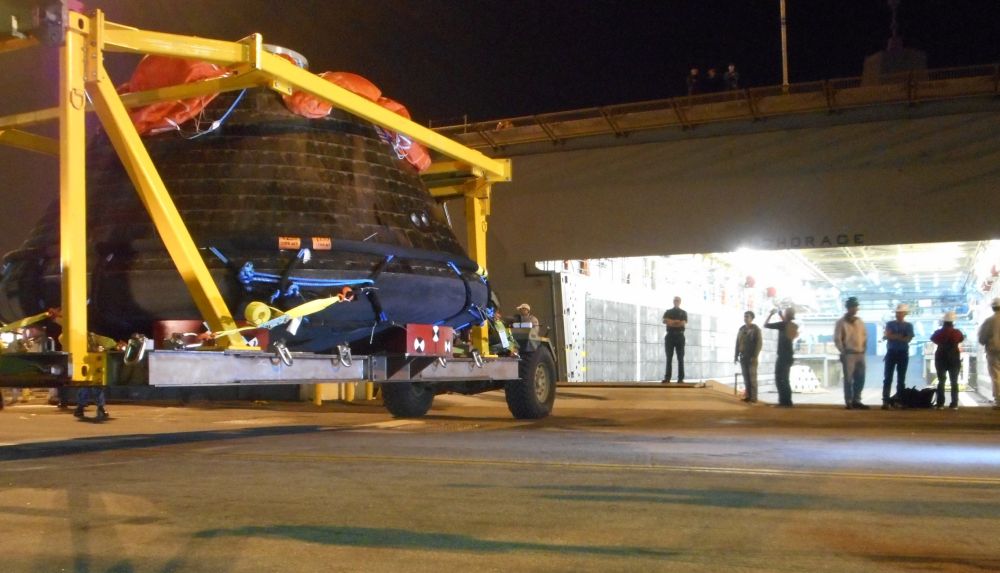
Want to keep up-to-date with all things space? Be sure to “Like” AmericaSpace on Facebook and follow us on Twitter: @AmericaSpace
